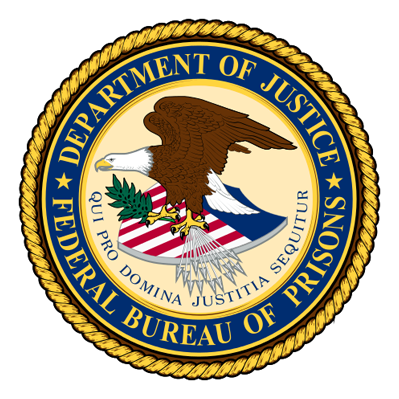Description
The Federal Bureau of Prisons (BOP) is a United States federal law enforcement agency under the Department of Justice that is responsible for the care, custody, and control of incarcerated individuals who have committed federal crimes; that is, violations of the United States Code.
History
The federal prison system had existed for more than 30 years before the BOP was established. Although its wardens functioned almost autonomously, the Superintendent of Prisons, a Department of Justice official in Washington, was nominally in charge of federal prisons. The passage of the "Three Prisons Act" in 1891 authorized the first three federal penitentiaries: USP Leavenworth, USP Atlanta, and USP McNeil Island with limited supervision by the Department of Justice.
Until 1907, prison matters were handled by the Justice Department General Agent, with responsibility for Justice Department accounts, oversight of internal operations, certain criminal investigations as well as prison operations. In 1907, the General Agent was abolished, and its functions were distributed between three new offices: the Division of Accounts (which evolved into the Justice Management Division); the Office of the Chief Examiner (which evolved in 1908 into the Bureau of Investigation, and in the early 1920s into the Federal Bureau of Investigation); and the Office of the Superintendent of Prisons and Prisoners, later called the Superintendent of Prisons (which evolved in 1930 into the Bureau of Prisons).
The Bureau of Prisons was established within the Department of Justice on May 14, 1930 by the United States Congress, and was charged with the "management and regulation of all Federal penal and correctional institutions.] This responsibility covered the administration of the 11 federal prisons in operation at the time. By the end of 1930, the system had expanded to 14 institutions with 13,000 inmates, and a decade later in 1940, the system had 24 institutions with 24,360 incarcerated.
The state of Alaska assumed jurisdiction over its corrections on January 3, 1959, using the Alaska Department of Corrections; prior to statehood, the BOP had correctional jurisdiction over Alaska.
As a result of the Sentencing Reform Act of 1984 and subsequent legislation which pushed for longer sentences, less judicial discretion and harsher sentences for drug-related offenses, the federal inmate population doubled in the 1980s and again in the 1990s. The population increase decelerated in the early 2000s, but the population continued to increase until 2014.
The National Capital Revitalization and Self-Government Improvement Act of 1997 transferred responsibility for adult felons convicted of violating District of Columbia laws to the BOP.

























